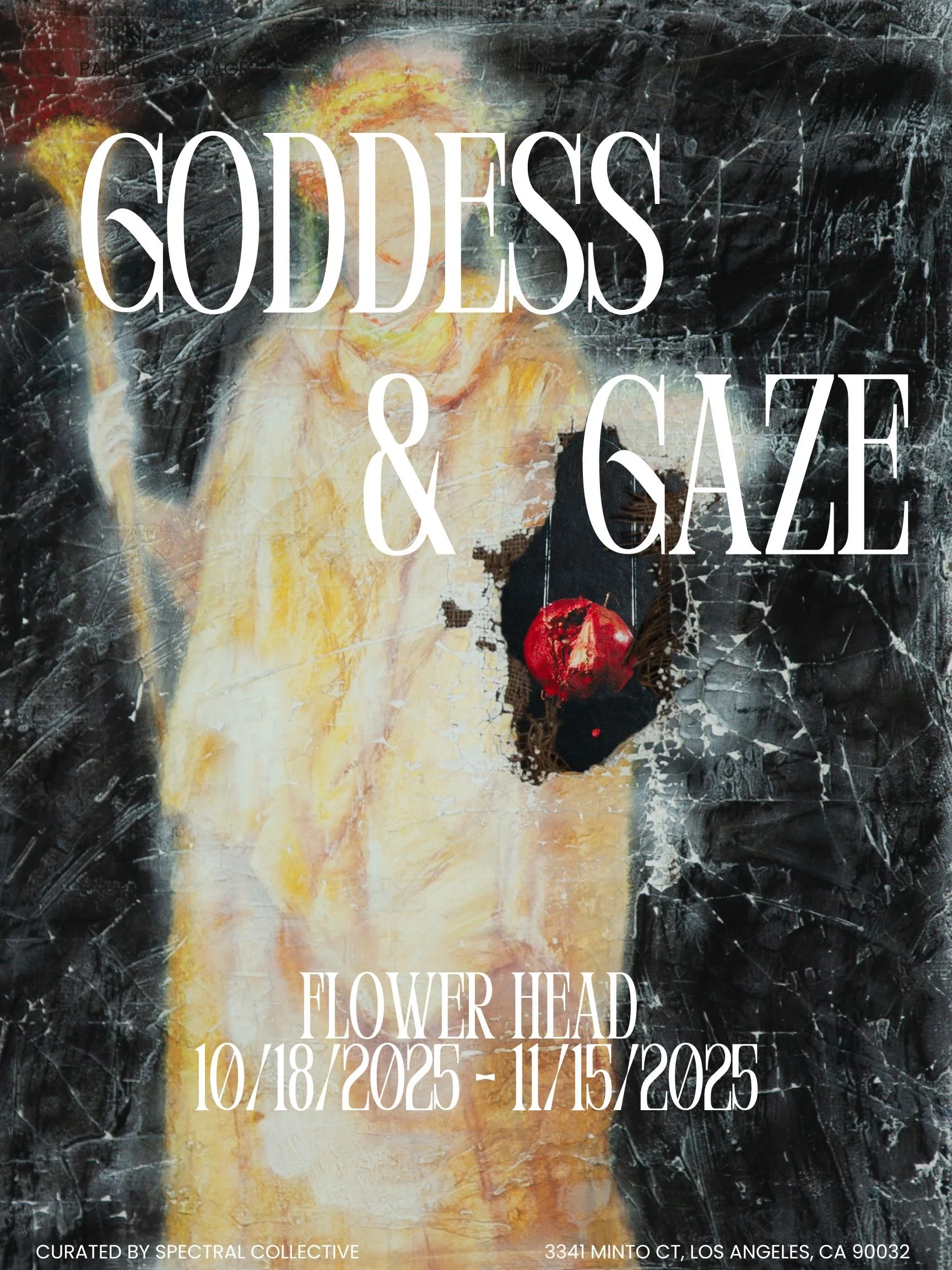Goddess & Gaze
Curated by Spectral Collective
18 October – 15 November 2025
Ariel Oakley
Andrea Nayeli
Catherine Menard
Claire Nereim
Hadley Rosenbaum
Juliana Paciulli
Kalli Brown
Liz Berger & Ella Frauenhofer
Oscar Corona
Patricia Fernandez and Ian James
Sarah Julig
Siqi Fan
Yuliya Vasilyevna
In the world of the matrix (or at least the one The Matrix shows us), the Oracle is a grandmotherly sort, a sweet elder Black lady living in a sketchy apartment building where she bakes cookies, tends to bald, spoon-bending children, and judiciously shares fragments of what she knows of the future. Even in the cyberpunk 2200s as imagined from the late nineties, the Goddess appears—in this case, in the form of the Crone—and she can see everything.
Decades before the Wachowski sisters unleashed The Matrix, theorist Laura Mulvey introduced the concept of the male gaze in her seminal essay “Visual Pleasure and Narrative Cinema,” published in 1975. “In a world ordered by sexual imbalance,” she wrote, “pleasure in looking has been split between active/male and passive/female. The determining male gaze projects its phantasy on to the female figure.” At roughly the same time that Mulvey was theorizing the male gaze, a host of women artists were invoking the Goddess, who existed a long time before the movies. Among these artists, operating under the broad umbrella of the “feminist art movement,” were Nancy Spero and Mary Beth Edelson, who both used goddess imagery explicitly and extensively to represent and reclaim female power, sexuality, and rage. From their works in the seventies to contemporary resurgences of eco-feminism, ancient pasts come shrieking and stomping into the present; like a specter, the Goddess sticks around and, like a spiral, she circles back. Her work isn’t done.
What is the gaze to the Goddess, and what is the Goddess to feminism? Vulvas and eyes are a similar shape, after all, though femme power of course transcends anatomy. The works in Goddess & Gaze join a long tradition of grappling with feminine agency, of carving out sacred space for beauty, anger, sex, and power to coexist—of seeking what Mulvey described in a different context as “the thrill that comes from leaving the past behind without rejecting it, transcending outworn or oppressive forms, or daring to break with normal pleasurable expectations in order to conceive a new language of desire.” With a range of modes and materials—wax, silicone, pubic hair, metal, wheat, ink, clay, water, foam, pigment, fabric, pixel—Goddess & Gaze brings together artists who compose their own view of the Goddess, embodying the plurality of her form and exploring the edges of her archetypes.
—Rachel Elizabeth Jones

